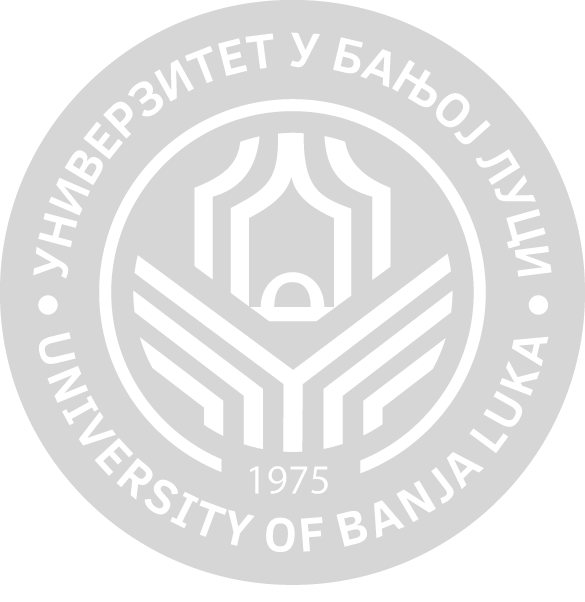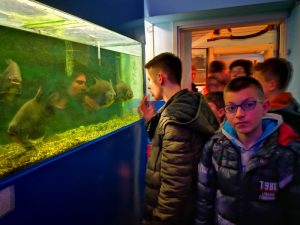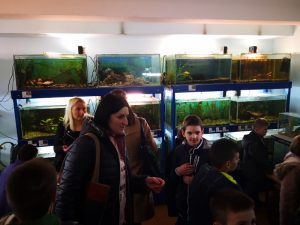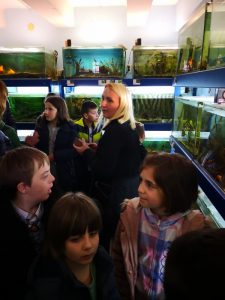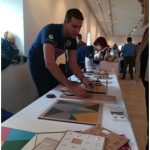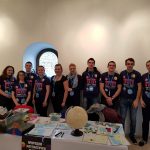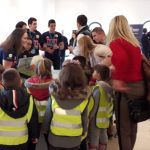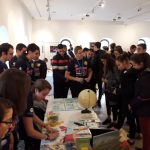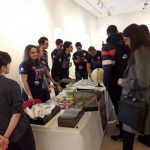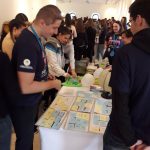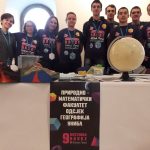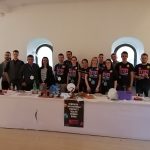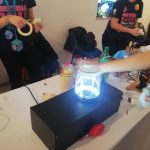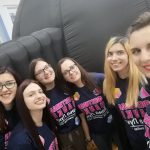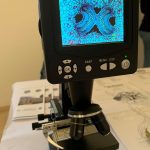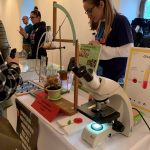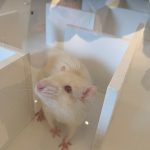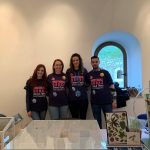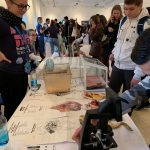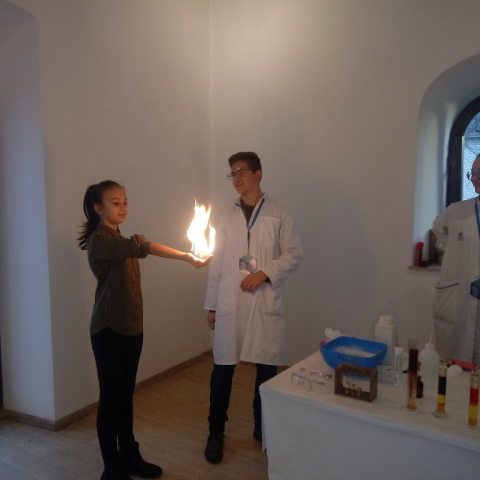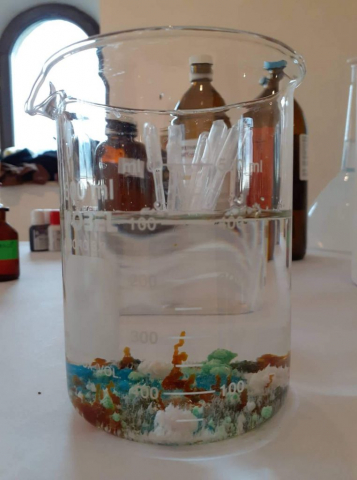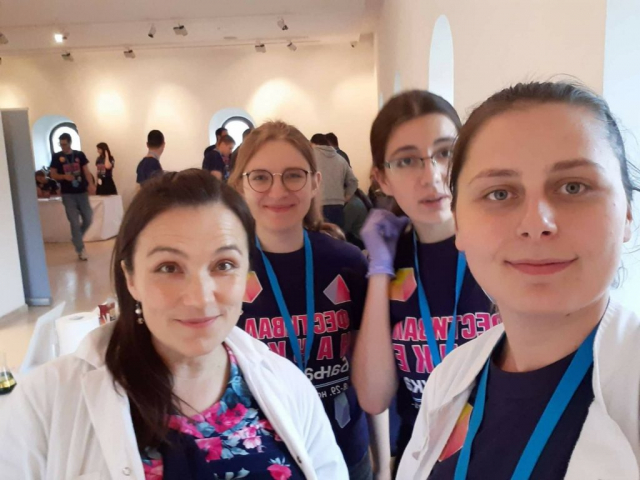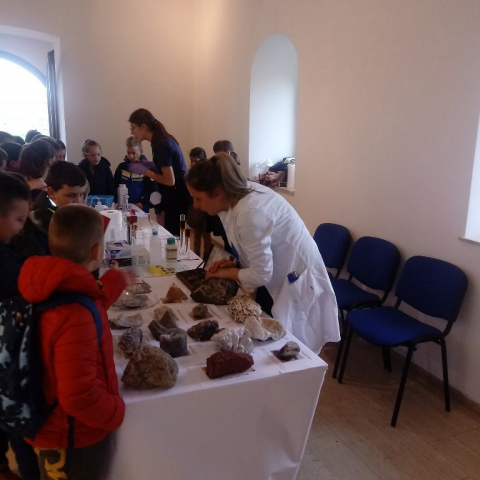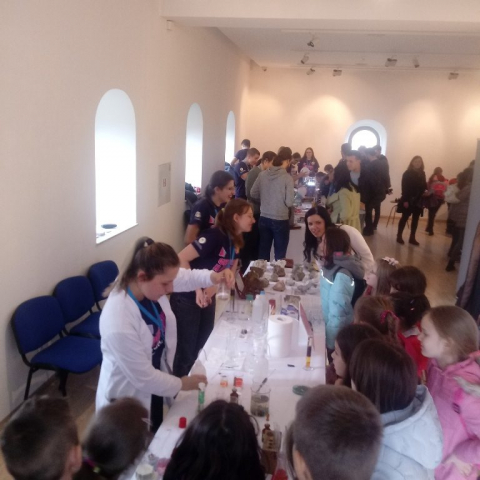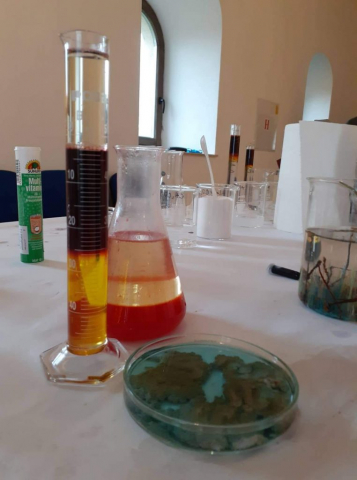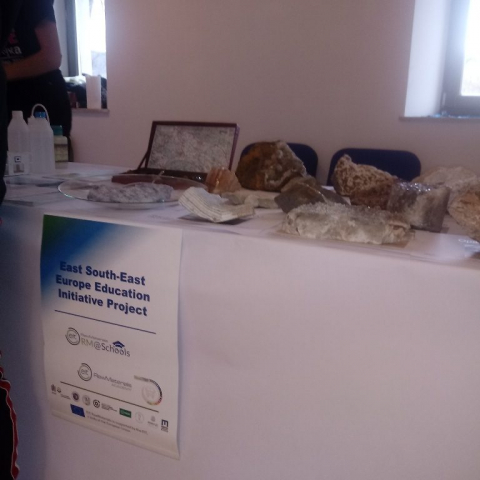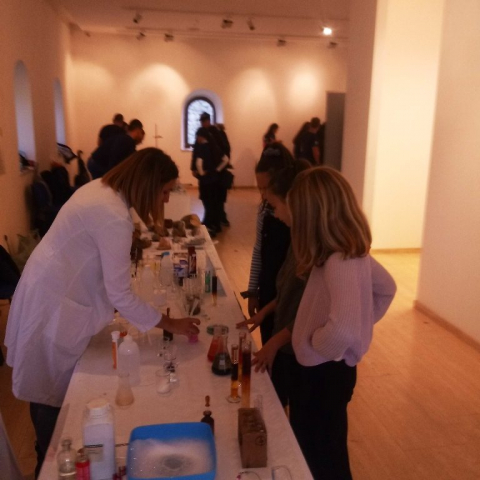



Као и претходних година студенти и наставно особље Природно-математичког факултета су активно учествовали на Фестивалу науке који организује Министарство за научнотехнолошки развој, високо образовање и информационо друштво Републике Српске. Фестивал је трајао два дана, 28.-29. новембар и био је одлична прилика да се промовишу природне и техничке науке дјеци и младима. Наш Факултет је био у могућности да промовише свој научно-истраживачки рад финасиран значајним дијелом из средстава Министарства али такође и из фондова оквира Horizon 2020 (као што су COST, EIT RawMaterials) те програма Erasmus+.
Поред Планетаријума, гдје су, првенствено ученици нижих разреда могли да уживају у пројекцији звјезданог неба, симулацији кретања планета, симулацији црне рупе
и Јавног Акваријума, са карактеристичним представницима наших, али и тропских слатких вода,
посјетиоцима су се представили студијски програми:
МАТЕМАТИКА И ИНФОРМАТИКА,
Волонтери Студијског програма математика и информатика су посјетиоцима помагали да ријеше бројне математичке мозгалице попут танграма, икосаедра, ханојских кула, постављања 8 краљица на шаховску таблу.
ГЕОГРАФИЈА
Наставници и сарадници заједно са студентима са Студијског програма географије представили су изазове и примјену ове науке у пракси, прилагођавајући се различитим узрастима посјетилаца Фестивала. Најмлађи посјетиоци су кроз игру пластелином научили како настаје вулкан, који су то основни елементи рељефа те из којих облака се могу очекивати падавине. Они мало старији имали су прилику да провјере своје знање из политичке географије, картографије и географије Европе и свијета кроз низ занимљивих радионица. Посјетиоцима су представљани природногеографски и друштвеногеографски потенцијали Босне и Херцеговине (с акцентом на Републику Српску), као развојне могућности. Такође, указивано је и на ризике у географском простору и на начине њиховог спречавања.
ФИЗИКА
У Каменој кући у Кастелу представљено је чак 19 експеримената. Студенти свих година, заједно са веома посвећеним лаборантима са овог студијског програма, покушали су дјеци и заинтересованима да приближе свијет науке и покажу колико је Физика занимљива.
ЕКОЛОГИЈА И ЗАШТИТА ЖИВОТНЕ СРЕДИНЕ
БИОЛОГИЈА
Посјетиоцима је омогућено да виде чудесни свијет наших извора, апарат за мјерење раста биљака, биљку месождерку, пролазак лабораторијског пацова кроз лавиринт, крвне елементе, усни апарат различитих инсеката, да измјере величину и број стома на наличју листа и слично.
ХЕМИЈА
Презентација СП Хемија укључивала је научно-популарне експерименте са растворима металних јона. Такође се фокусирала се на промоцију изванредних геолошких потенцијала наше Републике и цијеле земље те изложила колекцију живописних минерала које су им даровали колеге геолози. Посјетиоци су били изненађени да сазнају колике су резерве жељеза (50 милиона тона у базену Љубија), боксита (преко 30 милиона тона на истоку Републике), полудрагог камена опала (кога имамо у Добојској регији), пирофилита (38 милиона тона у Парсовићима), каолина (100 милона тона у области Српца) и многе друге.
Овај студијски програм је такође промовисао и своје учешће у пројекту East South East Education Initiative, финансиран од стране фонда EIT RawMaterials кроз који се управо и подиже свијест младих Европљана о природним богатствима њихових земаља. Циљ је да ученици кроз методологију програма RM@schools („Минерали у школама“), заволе ову област и студирају касније области наука о материјалима (хемија, геологија, технологија, географија…) како би допринијели већој независности Европе од увоза сировина са других континената. СП хемија у већини својих истраживања управо и користи домаће минералне и пољопривредне сировине и отпад.
Faculty of Natural Sciences and Mathematics at the Festival of Science 2019
Just like in previous years, students and teachers from the Faculty, actively participated in the Festival of Science, organized by the Ministry of Scientific-Technological Development, Higher Edcuation and Information Society. Festival lasted for two day, November 28 and 29, and it was a great opportunity to promote natural and technical science to the children and youth. Our Faculty was able to promote its scientific research which is financed in large part by the Ministry support, but also through the funds from the Horizon2020 Framework (like COST, EIT RawMaterials) and also by Erasmus+.
Beside the Planetarium, where the pupils could enjoy the projection of the stars in the sky, simulation of the planets’ movements and the black hole,
but also the Public Aquarium with the characteristic representatives of our local, but also the tropical water animals, the visitors could the see the presentations of the study programmes.
MATHEMATICS AND INFORMATICS
Volunteers from the Study Programme Mathematics and Informatics, were helping visitors to solve numerous, mathematical puzzles and problems, such as tangram, icosahedra, Hanoi towers, setting of the 8 queens on the chess board and many more.
GEOGRAPHY
Teachers and assistants, together with students, from this study programme presented some challenges in application of this scientific area in practice, adapting the presentation style to the different ages of the visitors. The youngest visitors played with the clay and were making the model of volcano, they also learned how the atmospheric precipitation is generated in nature. The older visitors, could check their knowledge in political geography, cartography, and geography of the Europe and the world, through different workshops. The visitors, were presented with natural geography, and social geography potentials of the Republic and the country as a whole, as the development potentials. At the same time, the presentations stressed some risks on the geographical areas and how can they be prevented or avoided.
PHYSICS
This study programme presented as many as 19 different experiments to the audience in the Stone House. Students, together with the dedicated technicians from this study programme, tried to make children and other visitors more familiar with the interesting world of physics.
ECOLOGY AND PROTECTION OF THE ENVIRONMENT, BIOLOGY STUDY PROGRAMMES
The visitors could see the magical world of our springs, the equipment for the plant growth measurement, meat-eating plant, the exercises of the laboratory rats, the blood elements, the mouth mechanism of different insects and they could also measure the size and the number of stomas on the leaf backside.
CHEMISTRY
Presentation of the Study programme Chemistry, included the scientific-popular experiments with the solutions of metal ions. Also, they focused on the promotion of the excellent geological potentials of our Republic and the country as a whole, by showing the collection of the colourfull minerals given to them by the colleague geologists. The visitors were surprised to learn how large are the deposits of iron (over 50 million tons in the Ljubija basin), bauxite (over 30 million tons in the east part of the Republic, the semiprecious stone opal (we have it Doboj region), pyrophyllite (38 milliona tona in Parsovići), caoline (over 100 million tons in Srbac region) and many more. This study programme has also promoted their participation in the East South East Education Initiative project financed by EIT RawMaterials, which is exactly about the promotion of the awareness of young Europeans about the natural recourses of their countries. The goal of the project is to use the methodology RM@schools to increase the interest of the pupils for the material sciences (chemistry, geology, technology, geography…). This way they should give their contribution in making Europe less dependent on the raw materials from other continents in the future. Study programme Chemistry is doing it also by having the domestic mineral resources and the waste as the dominant subject of their recent research.
